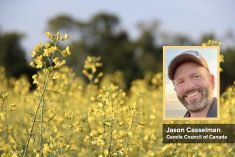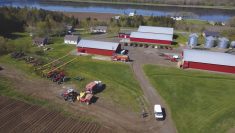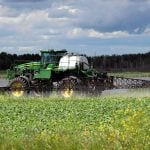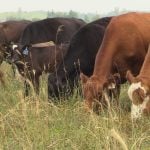Intercropping sometimes gets a bad rap from producers. For one thing, crop insurance often doesn’t cover intercropped mixtures, so if one or both crops fail, they’re out of luck. For another, yield benefits don’t always outweigh the extra legwork required at planting and harvest.
But the promise of intercropping is that some crops can be mutually beneficial, boosting overall yields, minimizing pest pressure and maximizing nutrients.
There’s no lack of crop combinations to choose from. Western Canadian growers have experimented with flax-lentil, pea-canola, pea-mustard, chickpea-flax and lentil-flax combinations, to name just a few. Recent on-farm trials in the U.S. have looked at winter wheat-soybean intercropping too.
Read Also
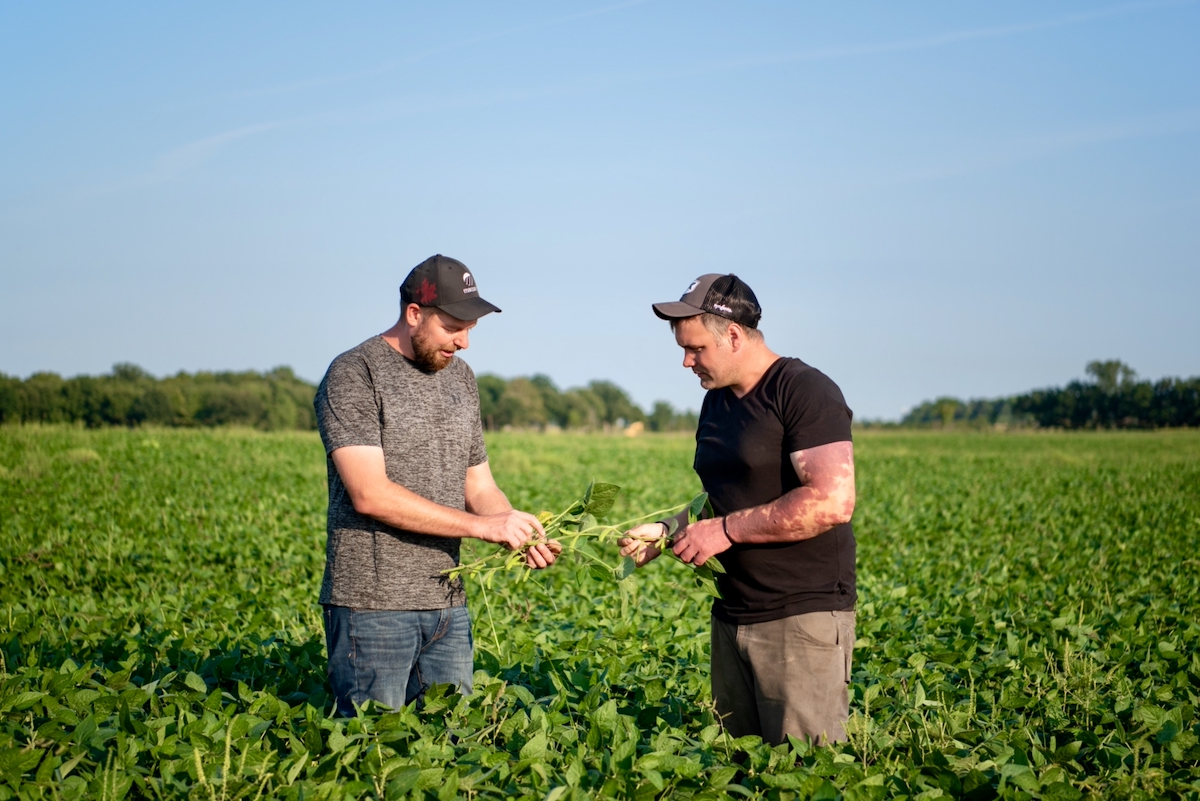
Ontario farmers partner for success
Ontario business partners, Matt Bergman and DJ Wassenaar, have been farming together for 10 years. Their focus on integrating unconventional…
Not all intercrop mixtures have data to back them up, but new research in Manitoba points to the benefits of pea-canola intercropping (or peaola).
Brent VanKoughnet, a consultant and owner of Agri Skills Inc., is heading up a field-scale, two-year trial of peaola intercropping for Manitoba Pulse and Soybean Growers (MPSG). The study, which began in 2015, looks at peas and canola grown alone and in combination.
“Anybody who talks about intercropping, they’d say the hope is that .5 plus .5 equals 1.2 — you get 20 per cent more than you would with each crop alone,” he says. “Roughly, I got 60 per cent of a canola crop and 60 per cent of a pea crop in 2015, but I did it on the same acre.
“Crops can find their space and complement each other a little bit, rather than one competing the other out of existence,” Van-Koughnet says.
Canola supports pea vines
Across both years of his study, VanKoughnet found that harvesting the intercropped fields went more smoothly than harvesting the peas alone.
“The peas climbing the canola make the peas easier to harvest,” he says. “And the peas knit the canola together so there’s very little risk of wind shatter because they’re knitted with the peas. The combination works pretty well as long as maturity is close to the same.”
A peaola study led by Alberta’s Lakeland Agricultural Research Association from 2014 to 2016 also found that the mixture resulted in minimal lodging, which improved their ease of harvest.
The most potentially time-consuming task at harvest is separation of peas and canola. VanKoughnet uses a screen in the yard before putting the crops in separate bins, but some producers put the mixture in one bin and leave screening for a rainy day.
Todd Vanstone, a grain producer near Miami, Man., has intercropped peas and canola on a quarter section for four years. He uses a Bench Industries grain cleaner to screen the canola from the peas.
Greg Bartley, MPSG’s research technician, says Manitoba producers who have experimented with peaola often have seed businesses already and are set up to clean seed.
It’s not the extra labour that’s been prohibitive for Vanstone. Instead, it’s the fact that Manitoba producers can’t get crop insurance for peaola. The last two years running, Vanstone had hail damage on the fields. This year, he had a windstorm, but despite the damage saw a decent harvest.
“I got into peaola after reading the research — there’s supposed to be a 20 per cent yield bump,” Vanstone says. “I’m trying to add some diversity to the soil as well.”

Nitrogen is tricky
For maximum canola yields, it might be necessary to put some N down. But the perfect formula for N application isn’t clear.
In a zero-nitrogen application treatment of peaola, VanKoughnet found the peas generated enough N for themselves and brought along a reasonable canola crop to boot. When small amounts of N are added, the canola “thrives,” he says, while the peas become slightly less productive.
In Land Equivalent Ratio (LER) comparisons for VanKoughnet’s study, the highest LER occurred in the zero-N treatment, with a total yield of 47.6 bu./ac., compared to canola alone at 44.5 bu./ac. and peas alone at 38.5 bu./ac.
According to Scott Chalmers, a diversification specialist with the Westman Agricultural Diversification Organization (WADO), the ideal N application rate is definitely less than 50 pounds per acre. When N is added, there is a higher proportion of canola to peas.
Chalmers has run peaola studies in Manitoba since 2009, when he began a three-year study looking at seeding rate combinations and crop characteristics in pea-canola intercropped systems versus single crops. This year, he started a new trial looking at nitrogen and phosphorus rates in peaola.
He’s also collecting data on 20 Manitoba and Saskatchewan producers’ peaola fields, tracking inputs, seeding rates, yield and LER.
“What we’ve been seeing is that every time farmers apply N, it defeats what they’re trying to do with intercropping — the canola yield goes up but the pea yield goes down. Anything you do wrong with the peas will hurt the system,” he says. “If you starve the system of N, the peas by nature will produce more than they need.”

Flea beetle benefit?
VanKoughnet says the risk of disease can often be higher in peaola, due to higher crop densities.
“It’s a tangled mess of plant material. I wouldn’t consider not having a fungicide,” he says. “For peas alone and canola alone you would (apply fungicide), and with this much more biomass you definitely need to treat it.”
If maturity of the two crops is roughly on par, this is simple. But in 2015, VanKoughnet’s canola got nipped with frost and was held back slightly, so staging was difficult. “That’s just the risk — some years the crops don’t move along at the same stage,” he says.
When it comes to insect pressure, the picture is brighter. While he doesn’t have data, Chalmers believes the pea-canola mixture deters flea beetles. Vanstone says over his four years of intercropping, he’s had significantly fewer flea beetles in peaola than in canola alone.
More combinations
These days, Chalmers is excited about a recently completed three-year study looking at a hairy vetch-sunflower mixture that yielded promising results.
In the study, hairy vetch did not affect sunflower yields and left a credit of over 60 pounds of N per acre, but the real benefit was to soil health. “We saw a 0.25 per cent organic matter boost in one year,” he says. “We couldn’t see any real economic benefit but in terms of intrinsic benefits there was the improvement of soil health, and there was a huge reduction of weeds.”
Chalmers says producers considering intercropping should have a clear goal in mind before they start. “Don’t do it because it’s in a report,” he says.
If producers know their primary objective for intercropping — nutrient management, soil and water management or habitat management — they’ll keep their priorities straight if they fail in a secondary objective.
“And if they’re successful,” says Chalmers, “they’ll realize economic benefits too.”




